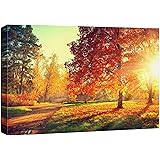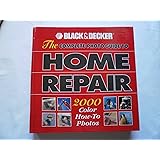Optimizing Your Entryway: Avoiding Common Design Missteps for a Welcoming Home
Studies universally affirm that a crucial first impression is formed within mere seconds of an initial encounter, a principle extending profoundly into our living spaces. The entryway serves as the very first introduction to your home’s personality and atmosphere, setting the tone for what lies beyond its threshold. An intentional entryway design establishes a welcoming feeling, promising both comfort and order to all who enter. Below, licensed architect Vibhusha masterfully dissects common pitfalls people encounter when configuring their entry spaces, offering immediate, actionable advice. This article will further expand upon these critical insights, delving deeper into each prevalent entryway design mistake and offering robust, actionable solutions to cultivate a highly functional and aesthetically pleasing entrance area.
1. The Pitfall of the Petite Entryway Rug
Many homeowners inadvertently select a small, “floating” area rug that does not adequately anchor the entryway space. Such a tiny rug creates an isolated island effect, making the entrance feel disconnected and often emphasizing its small dimensions. This common misstep visually shrinks the area, failing to provide the expansive and grounding perception a larger rug offers. Consequently, the space can appear awkward and out of proportion, diminishing its potential as a grand entrance. Choosing a rug of appropriate size is fundamental for establishing a coherent and inviting visual flow in this important transitional area.
Instead of a diminutive rug, choose one that is wider than your door’s opening, extending significantly into the hall. Ideally, the front legs of any nearby furniture, such as a console table or a small bench, should comfortably rest on the rug’s edge. This strategic placement creates a cohesive look, helping to define the entryway zone while making it feel more spacious and well-considered. A larger rug also offers better practical benefits, effectively trapping dirt and moisture from outside, thereby protecting your interior flooring more comprehensively.
2. Battling the Unpleasant View Upon Entry
The immediate visual impact upon entering your home significantly shapes your daily mood and overall perception of your living space. Confronting a chaotic mountain of clutter or a perpetually messy room like the kitchen as soon as you step inside can instantly elevate stress levels. This initial unpleasant sight can transform the transition from the outside world into a source of anxiety, rather than a calming return home. Ensuring a pleasant and organized view is paramount for fostering a sense of peace and order right from the start of your home experience.
To counteract an undesirable first impression, investing in smart storage solutions becomes absolutely essential for maintaining entryway order. Incorporate dedicated shoe racks, sturdy coat hooks, and decorative baskets or storage bags to keep items neatly organized and off the floor. If your home opens directly into a room that frequently becomes untidy, consider adding a stylish room divider, an elegant curtain, or strategically positioning furniture. These clever visual barriers effectively block any clutter from immediate view, ensuring a calm and welcoming visual experience.
3. The Missing Drop Zone for Everyday Essentials
Without a designated spot for small, frequently used items, the entryway can quickly become a chaotic collection point for misplaced essentials. Keys, mail, sunglasses, and wallets often end up scattered across various surfaces, creating visual clutter and daily frustration. This lack of a specific “drop zone” leads to frantic searches when you’re rushing out the door, adding unnecessary stress to your routine. A well-organized drop zone streamlines your daily comings and goings, ensuring everything has its proper place for convenient retrieval.
Incorporate a specific, easy-to-access area near the entrance where you can effortlessly deposit your everyday items. This could be a chic tray or bowl on a console table, perfect for collecting keys and loose change, or a sleek wall-mounted organizer for mail and important notes. An entryway table equipped with built-in drawers and compartments offers excellent hidden storage, keeping your smaller items neatly tucked away. Creating this dedicated space not only reduces clutter but also cultivates a sense of order and efficiency, simplifying your daily routine significantly.
4. Console Tables Lacking Closed Storage Solutions
A console table provides a fantastic surface in the entryway for collecting keys, letters, and other immediate items brought into the home. However, selecting a console table that is entirely open, devoid of drawers or closed compartments, often proves to be a significant design misstep. While it might look sleek initially, this design flaw quickly transforms the table into a catch-all for clutter that cannot be easily hidden. Items that aren’t visually appealing instantly compromise the aesthetic appeal, making the space appear untidy and disorganized.
If you are still searching for the ideal console table, prioritize models featuring at least one drawer or integrated closed storage. This crucial feature allows you to neatly tuck away everyday items and miscellaneous “crap,” maintaining a clean and organized surface. For those who already own an open console table, stylish baskets or decorative trays can serve as excellent makeshift storage solutions. These additions effectively hide clutter while simultaneously enhancing the table’s decorative potential, creating a much more polished and inviting entryway.
5. The Challenge of Shallow Shoe Storage
Providing an accessible and efficient place for shoe storage at the entrance of your home is a universal necessity for maintaining order. A common oversight occurs when individuals install shoe shelves without accurately measuring the actual space required for their footwear. People have diverse shoe sizes and styles, from dainty flats to bulky boots, and committing to storage that is too shallow becomes problematic. Cramming shoes into insufficient spaces can cause irreversible damage, bending straps, snapping heels, and leaving favorite boots looking deflated and prematurely worn.
Before investing in any shoe storage solution, meticulously measure the length and height of your largest pairs of shoes, including any boots. Opt for shoe cabinets, racks, or benches that offer ample depth and adjustable shelf heights to accommodate your entire collection comfortably. Consider vertical shoe storage units for smaller entryways, which maximize space while keeping footwear neatly organized. Proper shoe storage not only preserves the condition and longevity of your shoes but also contributes significantly to a tidy and welcoming entryway, preventing unsightly clutter.
6. Encountering Issues with a Shallow Coat Closet
A shallow coat closet presents similar functional frustrations to inadequate shoe storage, creating daily inconveniences that can impact your routine. Fighting a bulging wardrobe door that refuses to close properly due to insufficient depth can be an exasperating experience each day. Standard hangers and coats simply require a certain amount of space to hang freely, preventing crushing and wrinkling. Ignoring this critical dimension leads to a perpetually messy and dysfunctional storage area, diminishing its utility significantly.
As a practical rule of thumb for effective coat storage, aim for a wardrobe that is at least 60 centimeters (approximately 24 inches) deep to comfortably accommodate hangers and garments. If space constraints limit you to a shallower depth, specialized solutions exist, such as pull-out rails where coats face you rather than hanging perpendicular to the door. While these might offer slightly less convenience than a full-depth closet, they provide a much better alternative than no dedicated coat storage at all, helping to maintain an organized entryway.
7. The Consequences of Wrong Entryway Flooring
The entryway is inherently a high-traffic zone, subjected daily to significant wear and tear from dirt, moisture, and debris tracked in from outside. Selecting delicate or unsuitable flooring materials for this demanding area can lead to rapid deterioration and costly maintenance issues. Softer options like plush carpets or unsealed hardwood are particularly vulnerable to permanent stains, unsightly scuffs, and severe water damage, compromising both aesthetics and longevity. Making the right flooring choice upfront is crucial for durability and ease of care.
If you have the opportunity to select new finishes for your home, prioritize durable and easy-to-maintain materials for the entryway. Hard-wearing options such as ceramic or porcelain tile, luxury vinyl plank (LVT), or sealed concrete offer excellent resistance to moisture and abrasion. When changing the flooring is not feasible, layering a robust and washable area rug over your existing floor provides an effective protective barrier. This strategic layering helps to trap dirt and moisture, safeguarding the underlying material while also enhancing the entryway’s aesthetic appeal.
8. Overlooking the Power of an Entryway Mirror
The absence of a mirror in the entryway is a surprisingly common oversight, neglecting both practical convenience and significant aesthetic benefits. This area serves as your final stop before departing your home, making it an ideal location for a quick appearance check to ensure you look your best. Catching a stray hair or a smudge on your face before heading out can prevent minor embarrassments and boost your confidence throughout the day. A mirror seamlessly integrates into this crucial pre-departure routine.
Beyond its utilitarian function, a strategically placed mirror can profoundly transform the perceived size and brightness of your entryway, which often tend to be smaller and darker spaces. Mirrors reflect available light, whether natural or artificial, distributing it more effectively throughout the area. This reflective quality visually expands the space, creating the illusion of greater depth and openness, making a potentially cramped area feel significantly more spacious. Furthermore, a thoughtfully chosen mirror acts as an elegant decorative element, enhancing the overall design aesthetic and making the entryway feel more inviting and complete.











